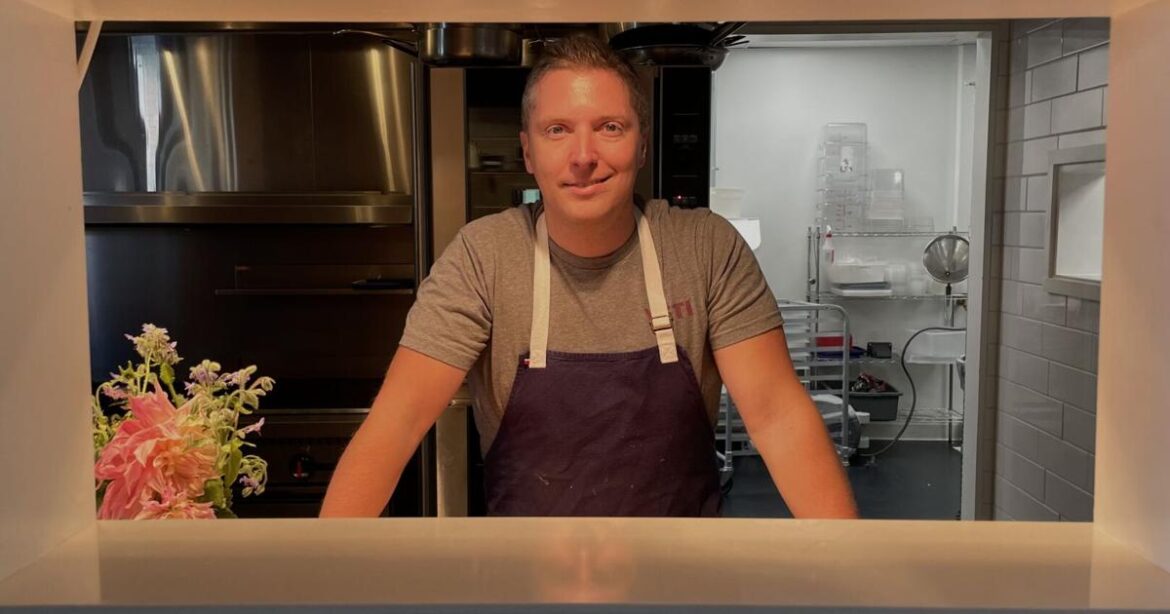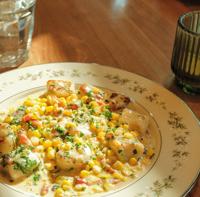ST. ALBANS CITY— Chef Adam Monette, a previous culinary instructor at the Northwest Career & Technical Center, winner of the Holiday Baking Championship and now restaurant owner and chef, discusses his personality in the kitchen, the steps he takes towards improving his business and some opinions on food.
Q: Do you have a dish that inspired you to cook, like Anthony Bourdain and Vichyssoise?
A: Probably when I was working for Ralf (LaBelle). It was this little cafe (Edelweiss Bakery & Café), but we also did a dinner service one night a week.
He made this manicotti dish; instead of using pasta, he used crepes. It’s so clever in so many ways because what is pasta? It’s flour and water. The ingredients are very similar.
Q: Are you more of a traditionalist or inventive when you’re in the kitchen?
A: I’m a traditionalist 100%, not to say that I don’t veer off the beaten path.
There are two categories of chefs: the chef who is trying to give someone a new experience that they have never tried before. And then, there are people who are giving you something that you’ve tried before and make the most memorable version.
We’re on that spectrum. People have had a lot of the dishes here in some capacity. I’m just trying to do it the way I would do it, and hopefully that resonates as being a very good version of it.
We’re not reinventing anything. We’re just trying to express it the best way possible with the ingredients we have available.
Q: You were quoted saying, “I always told my students that in this profession, you have to be disciplined, incrementally trying to improve — even your routine — to get a better outcome.” Since you’ve opened the restaurant, do you have examples of those small incremental improvements you’ve made?
A: You’ve got to make sure you have enough lead in your pencil to finish everything else that’s left and not be surprised.
You look at those crossover items on the menu, like the Boursin cheese that we make to the mayonnaise. They have similar garnishes, so it makes sense to prep them all at the same time.
Every day I make baguettes. Every single day, I do it a little bit differently. I try something else, whether it’s the temperature, whether it’s not covering them, whether it’s seam side up or seam side down. We are going to keep on working until it’s as right as it can be.
Q: Can you talk more about your relationships with the local farms and businesses?
A: Vivid, Pomykala for vegetables, Breezy Acres. These relationships are either ones that I’ve created while I’ve been here in St. Albans, or they are relationships that Tyler (Comeau) or Henry (Long) has had with other farms that they worked with.
There’s a local mushroom farmer in Burlington (FUNJ). We used some of his stuff for the mustard chicken dish that we had. We have really great
vendors, really good relationships. And there are so many more out there. In some ways, we’re limited just because people aren’t coming this far north.
Q: What is the best way to cook a sausage, or how do you prepare the sausage dish you are currently serving?
A: We blanch the sausage, ice it down, lightly sear it, then we’ll finish warming it in the oven.
The idea is to retain all the juice within the sausage. If you just throw it on the grill, the chance of it splitting and drying out is very high.
That sausage has changed, too, along with the garnish. Originally, it was white beans; now it’s with lentils. Now we have a piperade that’s blended into the sausage, slightly spicy, stellar.
In Café Monette’s New England corn chowder, instead of traditional potato, chefs use gnocchi instead.
Courtesy Tyler Comeau
Q: Are there any unpopular parts of animals that you try to incorporate in your food that other people veer away from?
A: I would say that is my favorite part of cooking: presenting something where people have this visceral response immediately, but then you can change their conceptions of a dish.
You know, we have chicken liver mousse that’s on the country plate. Most people, they’re not going to the store buying chicken livers.
And the economic opportunity with that is it’s super cheap. People throw it away. Treated well, it can be luxurious. It just takes time and effort. But those are things that people just don’t know anymore, or don’t do.
We’re trying to cross over and utilize as much as we can just to make sure we’re not wasting anything.
Q: Which herbs do you think are underused?
A: You could easily say it’s lovage or it’s hyssop. Nobody’s using them, period.
Parsley, using it well. We’re not sprinkling on the edge of the plate here; it’s meant to be consumed as part of the experience. With high-fatty foods, it works well.
Q. What’s the decision-making process when you’re making a new menu?
A: We adapted for a late summer menu. Some of the dishes, like the baba au rhum on the menu, have seen probably three or four different iterations.
Which is the same thing with the mille-feuille: it was praline last week, we’ve done that one with peaches and whatever was in season or the farmers had an abundance of.
Corn is in a huge upswing. The idea (for one of Café Monette’s new dishes) is New England corn chowder. Then, instead of traditional potato, we’ll do the gnocchi. It’s a fantastic dish.
I’m hoping to get some cauliflower on the menu. Whether it’s a gratinée of cauliflower as a side, or something maybe served with rabbit. We are getting the product in and making a decision as we go.



Dining and Cooking